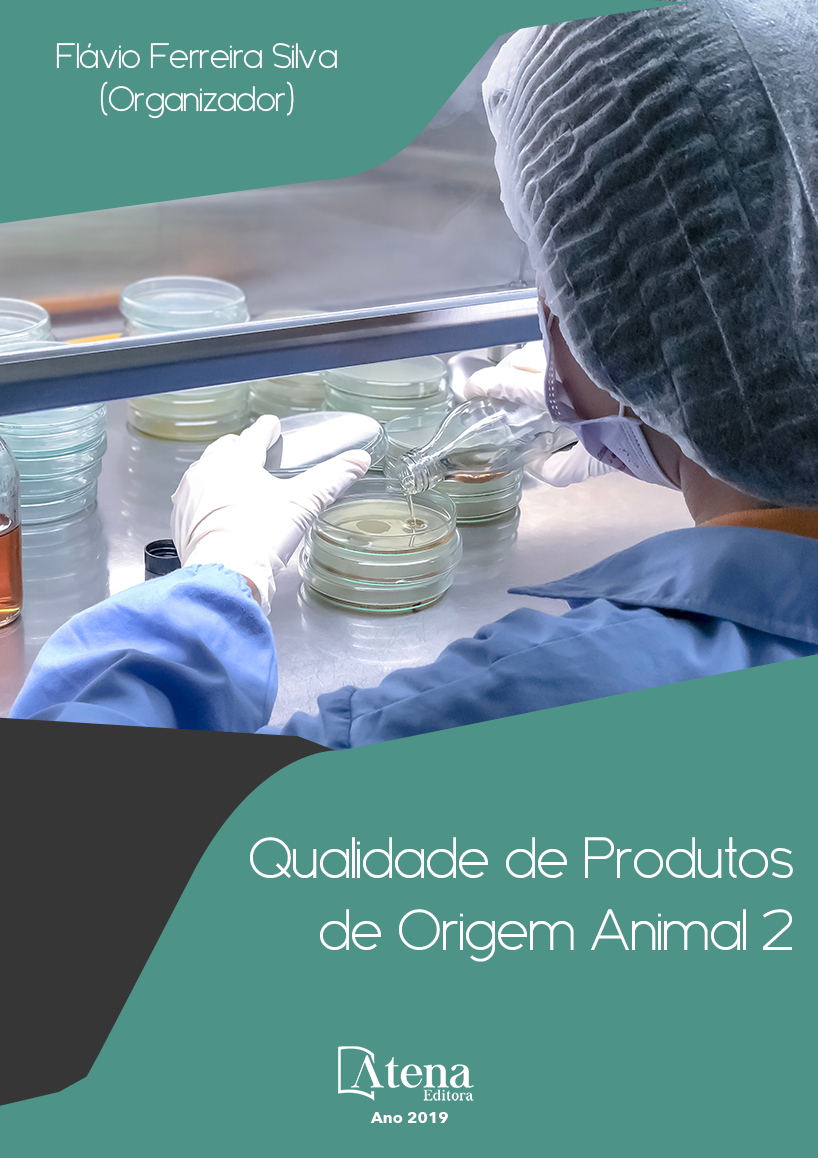
OCORRÊNCIA DE BOLORES E LEVEDURAS EM CARNE BOVINA MOÍDA IN NATURA COMERCIALIZADA EM MANAUS, AMAZONAS
A carne moída destaca-se por sua
alta popularidade, baixo custo e versatilidade.
Por possuir maior superfície de contato,
favorece a proliferação microbiana, o que traz
possíveis riscos ao consumidor. O objetivo
desse trabalho foi realizar a quantificação e
identificação de bolores e leveduras na carne
moída comercializada em Manaus, Amazonas.
Foram analisadas amostras de duas redes
de supermercados com oito coletas em cada
e oito coletas únicas em açougues de bairro.
De cada estabelecimento, foram adquiridas
duas amostras, sendo uma proveniente de
carne previamente moída e outra da carne
moída na aquisição, totalizando 48 amostras
analisadas entre janeiro a dezembro de 2018.
Foram realizadas contagens segundo a IN No
62/2003 do MAPA e identificação de fungos
filamentosos pela técnica de microcultivo.
Não ocorreu diferença entre as contagens
obtidas, sendo obtidos valores médios de 3,0
x 105
UFC/g para carne moída na aquisição
e 3,4 x 105
UFC/g para carne previamente
moída. Para a rede de Supermercados A, B e
açougues, respectivamente, 5,8 x 105
; 3,1 x 105
e 6,1 x 104
UFC/g. Dentre as 48 amostras, foi
realizada uma amostragem para identificação
dos gêneros de fungos que contaminavam as
carnes, sendo: seis amostras da carne moída
na aquisição (Penicillium spp., Aspergillus spp.,
Fusarium spp. e Cladosporium spp.) e cinco na carne previamente moída (Penicillium spp., Aspergillus spp. e Cladosporium spp.). A
identificação de bolores potencialmente toxigênicos na microbiota das carnes pode ser
considerada um perigo à saúde pública.
OCORRÊNCIA DE BOLORES E LEVEDURAS EM CARNE BOVINA MOÍDA IN NATURA COMERCIALIZADA EM MANAUS, AMAZONAS
-
DOI: 10.22533/at.ed.66619121117
-
Palavras-chave: contaminação, Penicillium, Aspergillus, toxinas, fungos.
-
Keywords: contamination, Penicillium, Aspergillus, toxines, fungi.
-
Abstract:
Ground beef stands out for its high popularity, low cost and versatility. As
it has a larger contact surface, it favors microbial development, which brings possible
risks to the consumer. The objective of this work was to quantify molds and yeasts in
ground beef marketed in Manaus, Amazonas. Samples from two supermarket chains,
with eight samplings in each, and eight unique samplings at neighborhood butchers
were analyzed. From each establishment, two samples were acquired, one from
previously ground beef and one from beef ground at acquisition, with a total of 48
samples, analyzed from January to December 2018. Counts were performed according
to MAPA IN No 62/2003 and identification of filamentous fungi by the microculture
technique. There was no difference between the counts obtained, with average values
of 3.0 x 105
CFU/g for beef ground at acquisition and 3.4 x 105
CFU/g for previously
ground beef. For supermarkets A, B and butchers it was obtained, respectively, 5.8 x
105
; 3.1 x 105
and 6.1 x 104
CFU / g. Among the 48 samples, some were selected to
identify the genera of fungi that contaminated the meat: six samples of ground beef at
acquisition (Penicillium spp., Aspergillus spp., Fusarium spp. and Cladosporium spp.)
and five in previously ground beef (Penicillium spp., Cladosporium spp. and Aspergillus
spp.). The identification of potentially toxigenic molds in the meat microbiota can be
considered a public health hazard.
-
Número de páginas: 11
- Rodiney Medeiros dos Reis
- Kelven Wladie dos Santos Almeida Coelho
- Érika Tavares Pimentel
- Joziane Souza da Silva
- Luciene Almeida Siqueira de Vasconcelos
- Pedro de Queiroz Costa Neto
- Felipe Faccini dos Santos


